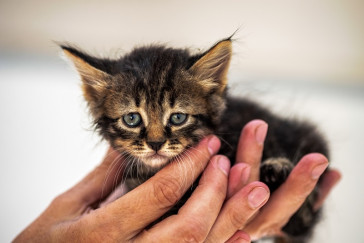Exploring the Influence of Street Art on Urban Culture

Street art emerged in the late 20th century as a form of protest, expression, and rebellion, primarily in urban centers. With its roots in graffiti culture, early street artists used spray paint and markers to tag subway cars, walls, and other public surfaces. Over time, street art evolved to include murals, stencils, stickers, and installations, transforming once unnoticed corners of cities into vibrant works of art. The accessibility of street art is one of its most remarkable characteristics-it is free, public, and exists outside of traditional galleries and museums, making it available to everyone.
Urban culture, on the other hand, refers to how people live, interact, and express themselves in cities. It encompasses everything from music to fashion to architecture to social movements to art and food. Cities are melting pots of diversity, and urban culture reflects this diversity in every aspect of life. Street art, which often draws from the city's social, political, and cultural context, is essential to urban culture. It combines creativity and activism, creating a visual dialogue constantly evolving alongside the city.
Influence of Street Art on Urban Culture
Transformation of Public Spaces
Street art has the power to transform public spaces completely. Adding colorful murals or thought-provoking graffiti can transform what was once a dull or neglected area into a vibrant, eye-catching part of the city. Cities like Los Angeles, New York, and Berlin have embraced street art as a means of urban beautification.
Cultural and Political Expression
Street art often reflects a city's social and political climate. Many artists use their work for protest, commentary, or social critique. Street art is raw, immediate, and often unfiltered, making it a powerful medium for expressing dissent and calling for change.
Influence on Fashion, Music, and Design
Street art has extended its influence into other areas of urban culture, including fashion, music, and design. Urban fashion often takes cues from street art, incorporating bold colors, graffiti-style prints, and other elements of street culture. Music genres like hip-hop and rap have close ties to street art, particularly graffiti, as both movements originated in the streets of New York City.
Economic Impact and Tourism
Street art has become a significant draw for tourists in many cities. Areas like Wynwood Walls in Miami or Shoreditch in London have become tourist attractions because they concentrate on large-scale murals and graffiti. This has led to an economic boost for local businesses, including restaurants, shops, and tour operators. Street art has also entered the fine art market, with artists like Banksy and Shepard Fairey selling pieces for millions of dollars.
Cultural Identity and Community Building
Street art often reflects the cultural identity of the communities in which it is created. For example, in cities with large immigrant populations, murals and graffiti usually celebrate those communities' heritage, history, and struggles. In some cases, street art can serve as a tool for community building, bringing together artists, residents, and local organizations to create works that reflect the collective identity of the neighborhood.
Components of Urban Culture

Music and Dance
Music and dance are integral parts of urban culture. Cities are often the birthplace of musical genres like hip-hop, jazz, techno, and reggae, which then spread globally. Urban dance styles like breakdancing and street dancing are deeply rooted in city life, with performers often taking to the streets to showcase their talents.
Fashion and Streetwear
Urban fashion, particularly streetwear, is closely linked to the culture of cities. Streetwear brands like Supreme, Off-White, and A Bathing Ape have their roots in urban culture and are heavily influenced by street art, graffiti, and hip-hop. These brands often collaborate with street artists and graffiti writers, further blurring the lines between fashion and art.
Public Art and Street Art
Street art and public art installations are integral components of urban culture. Public art transforms cities into living galleries, from graffiti and murals to sculptures and street performances. This art form reflects a city's unique character while engaging the public in a conversation about societal issues, cultural identity, and the role of art in everyday life.
Architecture and Urban Design
The architecture and design of a city play a crucial role in shaping urban culture. Modern skyscrapers, historic buildings, and innovative public spaces contribute to a city's atmosphere and identity. Cities like New York, Tokyo, and Barcelona are known for their distinctive architecture, which reflects their history, culture, and economic status. Urban planning and design also influence how people interact with the city, from transportation systems to green spaces and public plazas.
Social Movements and Activism
Cities are often the epicenters of social movements and activism. From civil rights marches to environmental protests, urban culture is shaped by the collective actions of people advocating for change. Street art is frequently used as a tool for activism, with artists creating works that address issues like gentrification, police brutality, and climate change. The ability of street art to reach large audiences in public spaces makes it an effective medium for sparking dialogue and inspiring action.
Iconic Public Art Installations
"Hope" Mural by Shepard Fairey - Los Angeles, USA
Shepard Fairey's "Hope" mural of Barack Obama became a cultural phenomenon during the 2008 U.S. Presidential election. The image's bold colors and iconic style symbolized optimism and change. Fairey's work has since been replicated and adapted across the globe, serving as a reminder of the power of art to inspire political movements.
"Girl with Balloon" by Banksy - London, UK
One of Banksy's most famous works, "Girl with Balloon," shows a young girl reaching for a heart-shaped balloon. This poignant image has been interpreted as a reflection on innocence, hope, and loss. Banksy's ability to evoke complex emotions with simple visuals has made this work a favorite in street art and fine art circles.
"Kobra Mural" by Eduardo Kobra - São Paulo, Brazil
Eduardo Kobra's massive murals in São Paulo celebrate cultural diversity and historical figures. His use of vibrant colors and geometric patterns has turned entire buildings into monumental works of art. Kobra's murals have become iconic symbols of São Paulo's urban identity and are recognized internationally.
"East Side Gallery" - Berlin, Germany
The East Side Gallery in Berlin is an open-air gallery that stretches along a portion of the Berlin Wall. After the wall fell in 1989, artists worldwide were invited to paint murals on its remaining sections. The gallery now stands as a powerful symbol of freedom and unity, with over 100 murals reflecting the city's turbulent history and optimistic future.
"Sistine Chapel of the Bronx" by Tats Cru - New York, USA
Tats Cru, a group of Bronx-based graffiti artists, transformed a local building into what is now known as the "Sistine Chapel of the Bronx." Their vibrant murals celebrate the culture, history, and people of the Bronx, elevating graffiti from a form of vandalism to an essential part of the neighborhood's identity.
Top Graffiti Movements
New York Graffiti Scene (1970s-1980s)
The New York graffiti scene of the 1970s and 1980s is often credited with launching the global graffiti movement. Artists like Jean-Michel Basquiat, Keith Haring, and the collective Tats Cru turned the city's subway cars and walls into canvases. This graffiti era was characterized by bold, colorful lettering and a rebellious spirit, and it continues to influence street art today.
Chicano Graffiti Movement - Los Angeles, USA
The Chicano graffiti movement in Los Angeles emerged as a form of self-expression and cultural pride among Mexican-American youth. Artists used graffiti to reclaim public spaces and celebrate their heritage. This movement played a key role in shaping the city's street art scene and continues influencing artists across the U.S.
Political Graffiti in Brazil
In Brazil, graffiti became a powerful tool for political expression during the country's military dictatorship. Artists used graffiti to protest censorship, corruption, and human rights abuses. Today, Brazilian street artists like Os Gêmeos continue to create politically charged works that reflect the country's ongoing struggles and triumphs.
Parisian Graffiti Movement (Bando)
In the 1980s, graffiti culture spread to Paris, where artists like Bando developed their distinct style. Known for their sharp lines and bold, clean lettering, Parisian graffiti artists became pioneers of the European graffiti scene. Bando's influence extended throughout Europe and helped shape the aesthetic of contemporary street art.
Stencil Graffiti Movement
Stencil graffiti, popularized by artists like Banksy, uses pre-cut templates to create images quickly and efficiently. This technique allows for intricate designs and detailed imagery, often used for political or satirical purposes. Stencil graffiti has become a hallmark of street art, and its influence can be seen in cities worldwide.
Contemporary Street Artists Shaping the Scene
Banksy
Perhaps the most famous street artist in the world, Banksy's satirical and subversive works have made him a cultural icon. Known for his anonymity, Banksy uses his art to critique political and social issues, from capitalism to war. His work has appeared in cities across the globe, and he remains one of the most influential figures in contemporary art.
Shepard Fairey
Shepard Fairey gained widespread recognition for his "Obey Giant" campaign and his iconic "Hope" poster of Obama. Fairey's work blends street art with graphic design, and his bold, propaganda-style images have become synonymous with political activism. His art continues to be a driving force in street art and public art.
JR
French artist JR is known for his large-scale photographic installations that cover buildings, streets, and rooftops. His work often focuses on social justice issues, particularly the lives of marginalized communities. JR's ability to blend photography and street art has earned him international acclaim, with projects ranging from the favelas of Rio de Janeiro to the U.S.-Mexico border.
RETNA
RETNA, a Los Angeles-based artist, is known for his distinctive script-like lettering that combines ancient calligraphy with graffiti. His work can be found on walls and buildings around the world, as well as in galleries and museums. RETNA's unique style has made him one of the most sought-after contemporary street artists.
Faith47
Faith47 is a South African street artist whose work often focuses on human rights, spirituality, and social justice themes. Her murals, found in cities worldwide, are characterized by their emotional depth and ethereal beauty. Faith47's art brings a sense of humanity and empathy to the streets, offering a voice to those often overlooked.
Conclusion
Street art and urban culture are deeply intertwined, profoundly influencing and shaping each other. From the vibrant murals that transform cityscapes to the political messages that challenge societal norms, street art is a powerful force in the cultural life of cities. Its impact on urban culture is undeniable, as it continues to inspire, provoke, and engage people from all walks of life. As cities grow and change, so will street art's role in defining and shaping urban culture.
This content was created by AI





